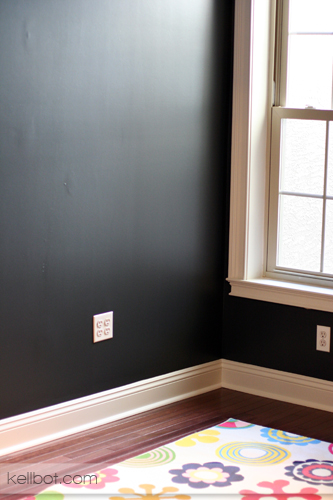I have a love-hate relationship with Pinterest. I enjoy browsing the site to see new ideas for organizing and decor, but more often than not when I follow a pin to the source I find an orphaned image. These images are often sitting unaccredited on Tumblr and have no background information to tell me more about what’s going on. I know at one point these images had parents, probably blog articles, but through sharing and re-sharing the original content has been lost. On more than one occasion, I’ve found things on Pinterest with a description which I knew to be completely incorrect.
I spend a lot of time on my own photos for my blog, and a few of them have made the rounds on pinterest/etc. I’m contemplating watermarking my images with my blog URL. This isn’t because I’m concerned about “stealing,” in fact I love it when people reblog my stuff, it’s about attribution. It’s about someone seeing something I’ve done and having a snowball’s chance of learning more if they’re interested.
If someone wants a watermark-free copy for use on their blog or whatever, I’m more than happy to provide it. The image above shows what I’m thinking of adding to my photos from here on out.
So what do you think? Is the watermark shown above an acceptable way of “claiming” my content, or just it just distract too much from the image to be viable?

Scott Bourne, a world-class photographer has announced that he is setting all of the photos that he posts to the ‘net with a Creative Commons license. This is after its copyrighted, which you can put in the EXIF data. He uses a “non-commercial free, pay for commercial use” type license.
http://scottbourne.com/
Well, copyrighting is a totally separate issue than what I’m hoping to address with watermarking (though I should take the time to add the copyright information to the EXIF data).
My goal is to prevent my own images from becoming total orphans, with no way to get back to the articles I’ve written. Most of the people who use Pinterest don’t have any clue what EXIF data is, and when images are posted to Pinterest I’m pretty sure the EXIF data is lost in the copying. It’s a problem that’s certainly not unique to Pinterest, but that’s where I’ve run into the most frustration.
Its trivial to crop out the watermark, but having it there helps. And it makes the case a lot stronger that it was a deliberate copyright infringement.
I hear that pinterest is one huge intellectual property violation site.
Its really easy to copyright, you just put the message on the file. To have any strength, you have to “register” the images with the Copyright office, which is nearly trivial, you bundle them up and submit. You can do it every say six months.
If the site strips off the meta data, there is not a lot you can do, except cover the image with ugly watermarks. At least your sample is small and out of the way.
I knew as soon as I saw the word “watermark” this was going to be related to pinterest. I have the same love/hate feelings about pinterest as you. It’s an awesome site to gets lots of inspiration for things like wedding centerpieces or place cards. It’s also the most frustrating site outside of tumblr to try to figure out where said inspiring images actually *came* from. If I had even an iota of the time it would take to accomplish the task, I’d absolutely think about going back and watermarking my product photos. People talk about pinterest as a way to “promote your brand”, but given my experience, I’m guessing it’s actually been a way for people to see my work + have really no idea what they’re looking at or how to find it.
That watermark is perfect. And mostly because of your reasoning. It doesn’t detract from the image but it attributes you. I’ve always thought watermarks were stupid until you decided to use them this way. I think I might start as well!
Until recently I always rolled my eyes at watermarks. And I still think a lot of them are stupid, particularly ones that are smack in the middle of the image. But while picking out furniture for our new place I kept finding things on Pinterest with no attribution. I found myself (internally) screaming “FOR THE LOVE OF GOD WHERE IS THAT COUCH FROM? WHAT COLOR IS THAT WALL? WHERE IS THE RECIPE FOR THAT CAKE?!” and cursing whomever posted the orphaned image to Tumblr.
you should add the © to the watermark
I am torn between liking that, and liking the watermarks I’ve seen that are made out of a bitmap font. They can be so small you really can’t see them unless you look..
The tiny ones are cool, but may have the same problem that Kelly worried about in my “copyright it” post: the clueless users may not see the tiny watermark and may stay lost.
As you make it smaller and smaller, you approach steganography, which can be useful in a court of law, but it usually useless for normal users.
Your watermark is perfect, in fact, I had to go back and look for it. I have been watermarking my photos for the same reason, and really I wish everyone would. Sometimes I see a photo on a forum, pinterest, or houzz, and wish it had a watermark so I could see if there are more photos of the thing, a description of how it was done, or where it was bought.